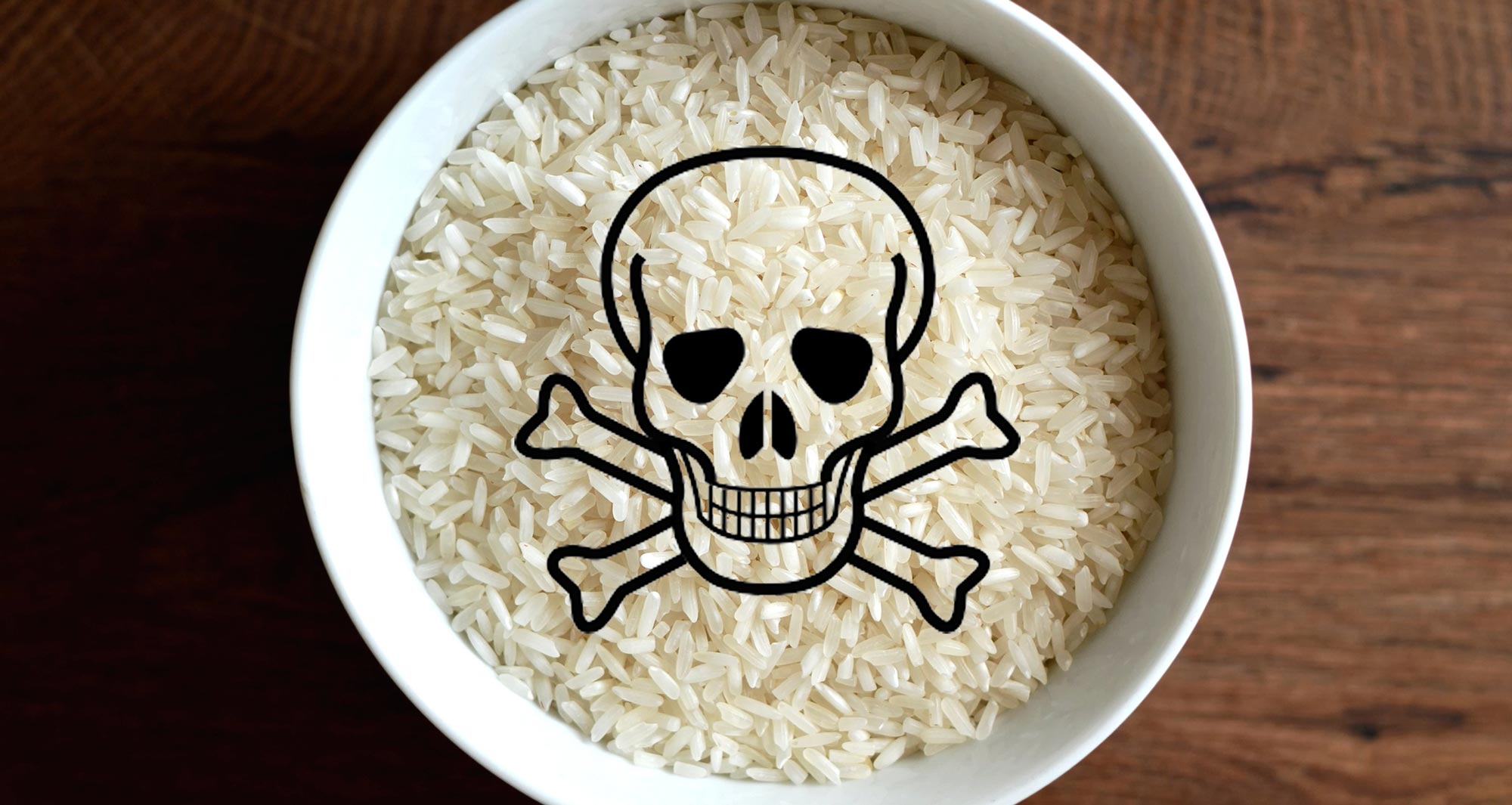Studies have found alarming levels of arsenic in rice. Find out which types of rice have the most arsenic and the steps you can take to protect yourself and your family from harm.
For many people, rice is a simple, comforting food. In Asia, rice is an ancient symbol of wealth, success, fertility, and good health.
And for more than half the world’s population, rice is a staple food and makes up a large portion of people’s diets.
Brown rice is often considered a healthy choice. It’s a whole grain. Plus, it’s a good source of fiber and important nutrients, such as magnesium, selenium, and manganese.
And rice is also sometimes recommended to eat when you’re sick. (I used to love soup with rice when I wasn’t feeling well.)
But there’s a dark side to rice you may not know.
Most of the rice today, whether white, brown, wild, organic, or conventional, is tainted with arsenic — one of the world’s most toxic poisons.
How did this basic, wholesome food become polluted? Should you change your cooking and eating habits to account for arsenic in rice? Or do you have to give up rice for good?
What Is Arsenic?
Arsenic is naturally present in the environment. This mineral occurs in the Earth’s crust and is found in soil, water, plants, and animals.
So maybe you’re wondering: How can arsenic be bad if it’s natural?
For one thing, humans have complicated this issue by adding more arsenic to the soil through pesticides and fertilizers.
And arsenic exists in two forms: organic and inorganic. In this usage, organic does not refer to a type of farming. It’s a chemistry term.
Arsenic combined with carbon is organic and mainly found in plant and animal tissues. On the other hand, arsenic with no carbon (and combined with other elements) is inorganic and mainly found in rocks, soil, or water.
Here’s the main thing you need to know: While the toxicity of arsenic varies widely — and both are considered public health concerns — inorganic arsenic is generally considered more toxic than organic arsenic.
Inorganic arsenic has been recognized as a human poison since ancient times. It’s the type most often used in pesticides and fertilizers.
It’s also found in a variety of foods — and some drinking water. But one of the most common food sources of inorganic arsenic is… you guessed it: rice.
More on why so much arsenic is in rice and what this means for you a little later.
How Harmful Is Arsenic?
You can’t tell if arsenic is in your food or drinks because both organic and inorganic arsenic have no smell or taste.
Most of the organic and inorganic arsenic you ingest will leave your body in a few days. (According to a statement made by the CDC and information published by the World Health Organization.)
But some of the inorganic arsenic — the kind of most concern — will remain in your body for months or even longer.
And frequent exposure to inorganic arsenic, even in low doses, can cause health concerns.
Small doses of arsenic from food or water can cause:
- Stomach aches
- Headaches
- Drowsiness
- Abdominal pain and diarrhea
- Confusion
And larger doses of arsenic create more serious problems.
Inorganic arsenic can even be deadly. In ancient Greece, arsenic was often used as a poison for criminals. A dose the size of a pea was found to be fatal.
Long-term exposure to arsenic has been linked to numerous health issues, including:
- Skin pigmentation and lesions
- Dementia
- Type 2 diabetes
- High blood pressure and heart disease
- Neurological problems
- And other ailments
Arsenic Is Also A Known Human Carcinogen
Arsenic is linked to many types of cancer, including skin, lung, bladder, liver, and kidney cancers. Evidence suggests lung cancer is the most common cause of arsenic-related mortality.
The International Agency for Research on Cancer classified arsenic as a category 1 carcinogen, meaning it’s known to cause cancer in humans. The US EPA has also determined that inorganic arsenic is carcinogenic to humans.
Inorganic arsenic is generally considered more harmful, but the IARC considers two types of organic arsenic to be “possibly carcinogenic to humans” as well.
Arsenic Is A Concern for Pregnant People and Children
For pregnant people, babies, and children, the situation may be even worse.
Anyone who is pregnant and is exposed to arsenic may put their unborn babies at risk of having compromised immune systems while in the womb and in early life.
The US Food and Drug Administration found that high levels of inorganic arsenic during pregnancy are linked to numerous adverse outcomes. For example, exposure to arsenic during pregnancy and infancy can impair a child’s performance on developmental tests.
Arsenic in Rice: Should You Be Concerned?
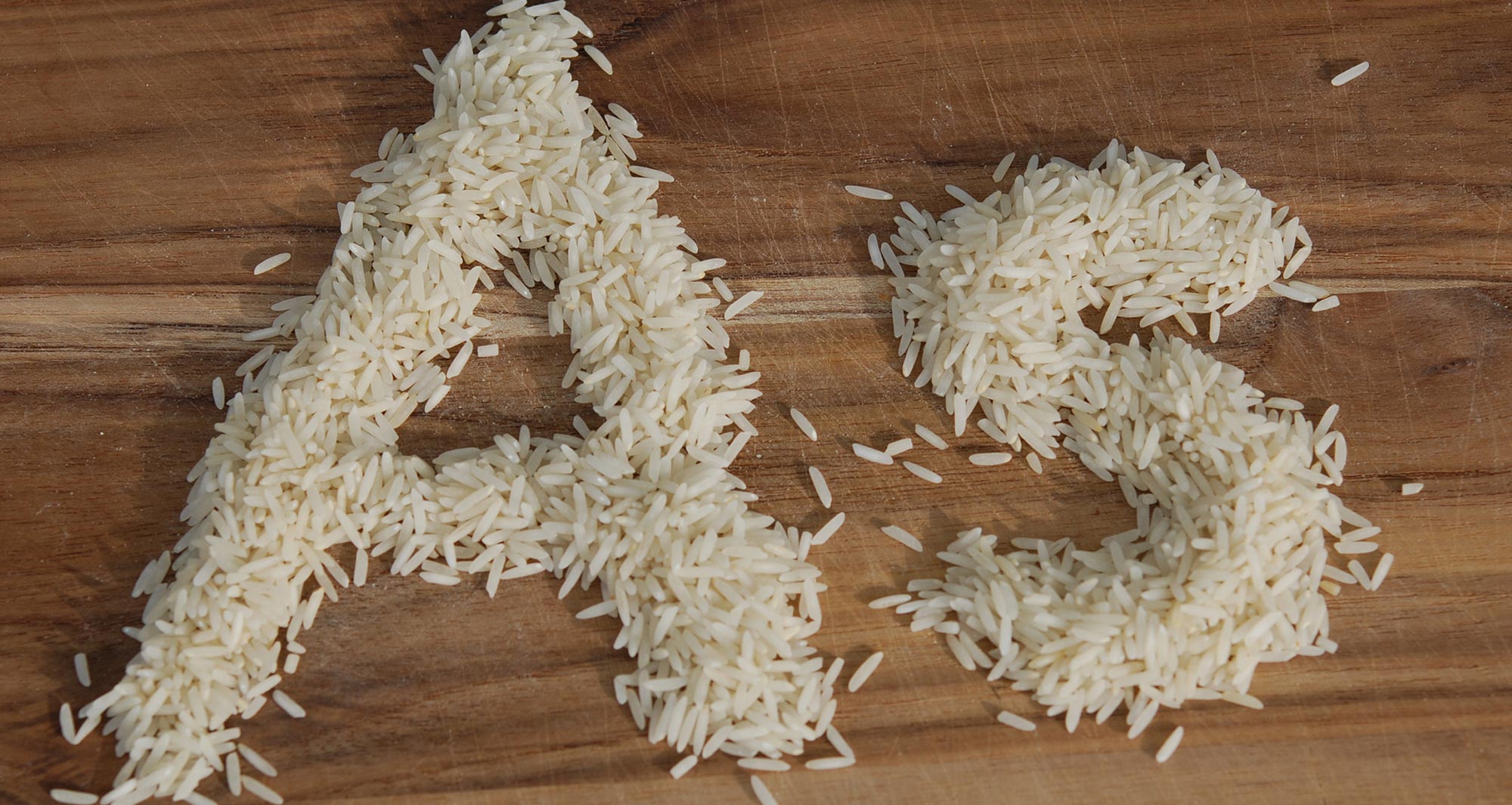
Rice is an easy, enjoyable food that can bulk up a meal for pennies. But should you stop eating it to avoid the health risks of arsenic?
Consumer Reports tested 223 samples of rice products and found significant levels of arsenic in almost all of them, including white, brown, parboiled, jasmine, basmati, and other types of rice.
Arsenic was found in rice whether it was organic or conventional — and from all regions of the world.
Is There Arsenic in Brown Rice, Black Rice, and Wild Rice?
Brown rice is generally healthier than white rice. (White rice is stripped of its outer layers, fiber, and beneficial nutrients).
But according to Consumer Reports, brown rice had 80% more arsenic than white rice. Arsenic, along with many valuable nutrients, tends to collect in rice’s brown outer hull.
Black rice (also known as forbidden rice) is an ancient grain that has been found to have as many antioxidants as blueberries, but has higher total arsenic content, although only half of that may be the carcinogenic, inorganic type.
Wild rice (technically not a rice but still a grain) may contain less arsenic than white or brown rice, but it depends on the water where it grows.
Does Organic Rice Have Arsenic?
Organically farmed rice may contain fewer pesticides, but could still contain arsenic since all rice soaks up minerals from the soil.
So organic rice will have fewer toxins and heavy metals overall. But it won’t likely have lower levels of arsenic unless the soil it grew in was never exposed to arsenic — not even 50 years ago.
Which Rice Has the Least Arsenic?
Basmati rice from California, India, or Pakistan is the best choice, according to Consumer Reports data. These types of rice have about one-third of the inorganic arsenic compared to brown rice from other regions.
Rice grown in Arkansas, Texas, Louisiana, and most other US states had the highest inorganic arsenic levels. So it’s best to minimize or avoid rice grown in these areas.
You can also check company websites and contact rice companies to see if they conduct independent testing for arsenic levels in their rice.
One brand, in particular, Lundberg Farms, is transparent about the problems of arsenic in rice. Their CEO wrote a letter about the issue and how the company is addressing it.
How Does Arsenic Get in Rice?

When arsenic is in the soil, all plants will absorb some of it. But rice is different.
Because it’s grown under flooded conditions (where irrigation water is often contaminated with arsenic), rice absorbs more arsenic than other food crops.
Arsenic-based pesticides were heavily used on crops for decades. And inorganic arsenic can persist in the soil indefinitely.
Even if farmland has been growing organic food for decades, if it was ever exposed to arsenic-contaminated pesticides, these toxins may still persist in the soil today.
Inorganic arsenic compounds and most arsenic-based pesticides have now been banned in agriculture in the US But some may still reach Americans by way of other countries.
Can Arsenic Be Removed from Rice?
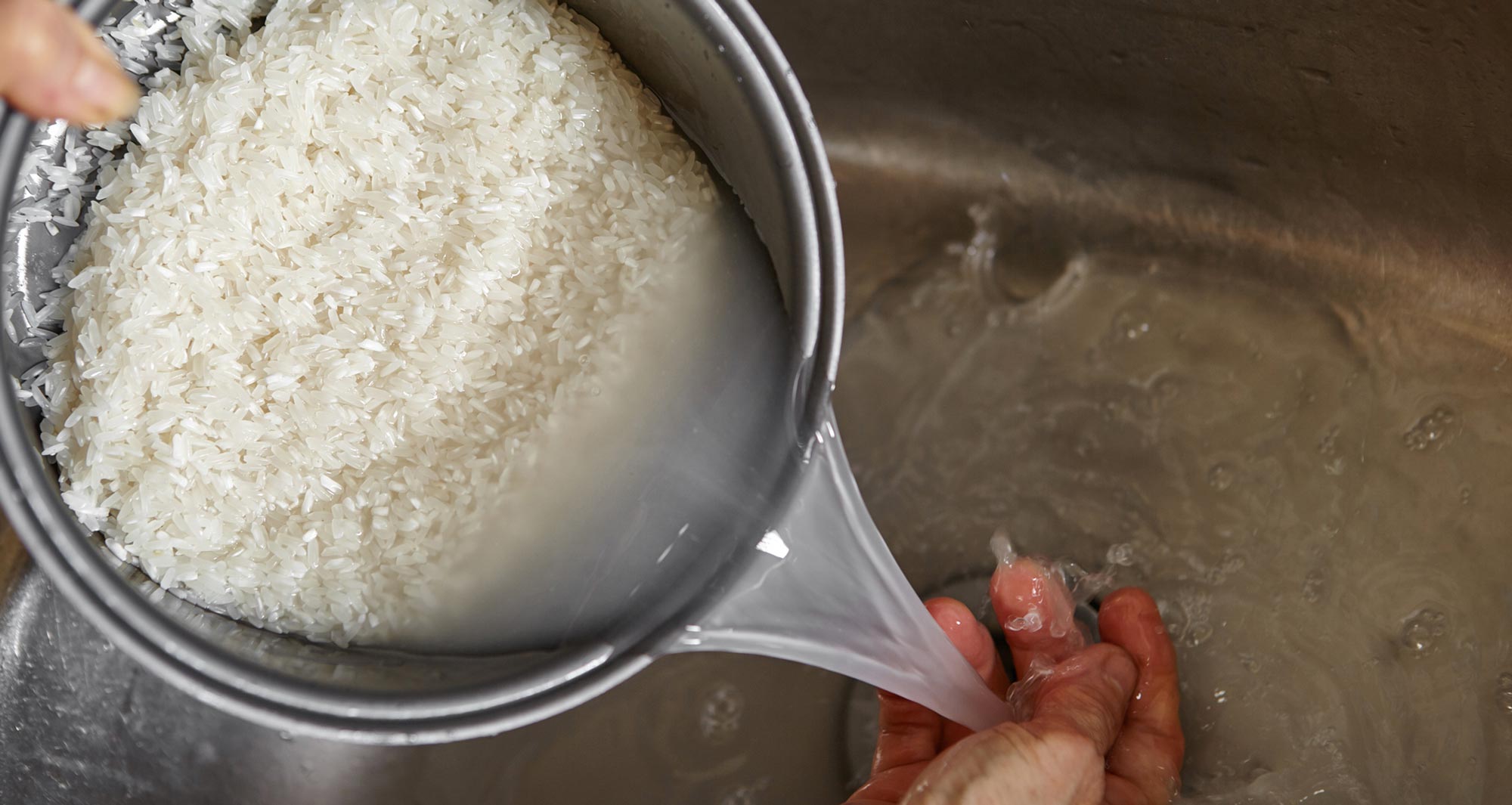
To some extent, arsenic can be washed off. Arsenic is water-soluble. But rinsing rice does usually remove some of the valuable nutrients.
According to the FDA, rinsing rice may reduce the levels of some nutrients, including folate, iron, niacin, and thiamin, by 50 to 70%.
However, published studies indicate that cooking rice in excess water (from six to 10 parts water to one part rice), and draining the excess water, can reduce 40 to 60% of the inorganic arsenic content, depending on the type of rice.
One 2015 study published in PLOS ONE, found a cooking method that reduced arsenic by 85%. They used a filter coffee maker to pass the hot water through the rice as it cooks.
But nutrients were lost during the coffee filter experiment, too. Approximately 50% of the potassium and 7% of the phosphorus were lost. The good news was that the levels of calcium, copper, iron, manganese, sulfur, and zinc did not change significantly.
The Parboiling Method

Then, in 2020, a University of Sheffield study came out with perhaps the most effective and time-saving way to reduce arsenic in rice at home. Researchers compared four different cooking methods: unwashed rice and absorbed water, washed rice and absorbed water, pre-soaked rice and absorbed water, and parboiled rice and absorbed water.
The last cooking method, parboiling the rice and letting it absorb the water, was the most efficient, removing 50% of the arsenic found in brown rice and 74% of the arsenic found in white rice while still preserving nutrients. This “parboiling with absorption” method involves pre-boiling the water and then cooking the rice in it for five minutes (sort of like you might cook pasta!). The rice is then drained, added back to the pot, and refreshed with new filtered water, ideally boiling water (and two cups of water for every cup of rice). Bring to a boil once again (if it wasn’t already boiling) then reduce heat to a simmer and cover until all the water is absorbed.
How to Reduce Arsenic in Rice
If you decide to eat rice, you may want to take these steps:
- Choose organic basmati rice from California (or India and Pakistan) if possible.
- Rinse rice thoroughly or even better soak it for 48 hours before cooking it, pouring off the water and rinsing it every 8 to 12 hours (like soaking beans).
- Cook rice in 6 to 10 parts water to one part rice, draining off the extra water after cooking.
- Or try the parboiling with absorption method.
Water is often contaminated with arsenic as well, so using filtered water is best. (Learn more about the importance of clean drinking water.)
And think about adding variety to your diet and trying more alternatives to rice.
Rice Recommendations for Parents
The FDA issued a statement discouraging parents to not use rice and rice cereals as a primary food due to arsenic contamination.
Instead, the agency advises parents to feed kids a variety of grains and other foods.
Remember Rice Products, Too
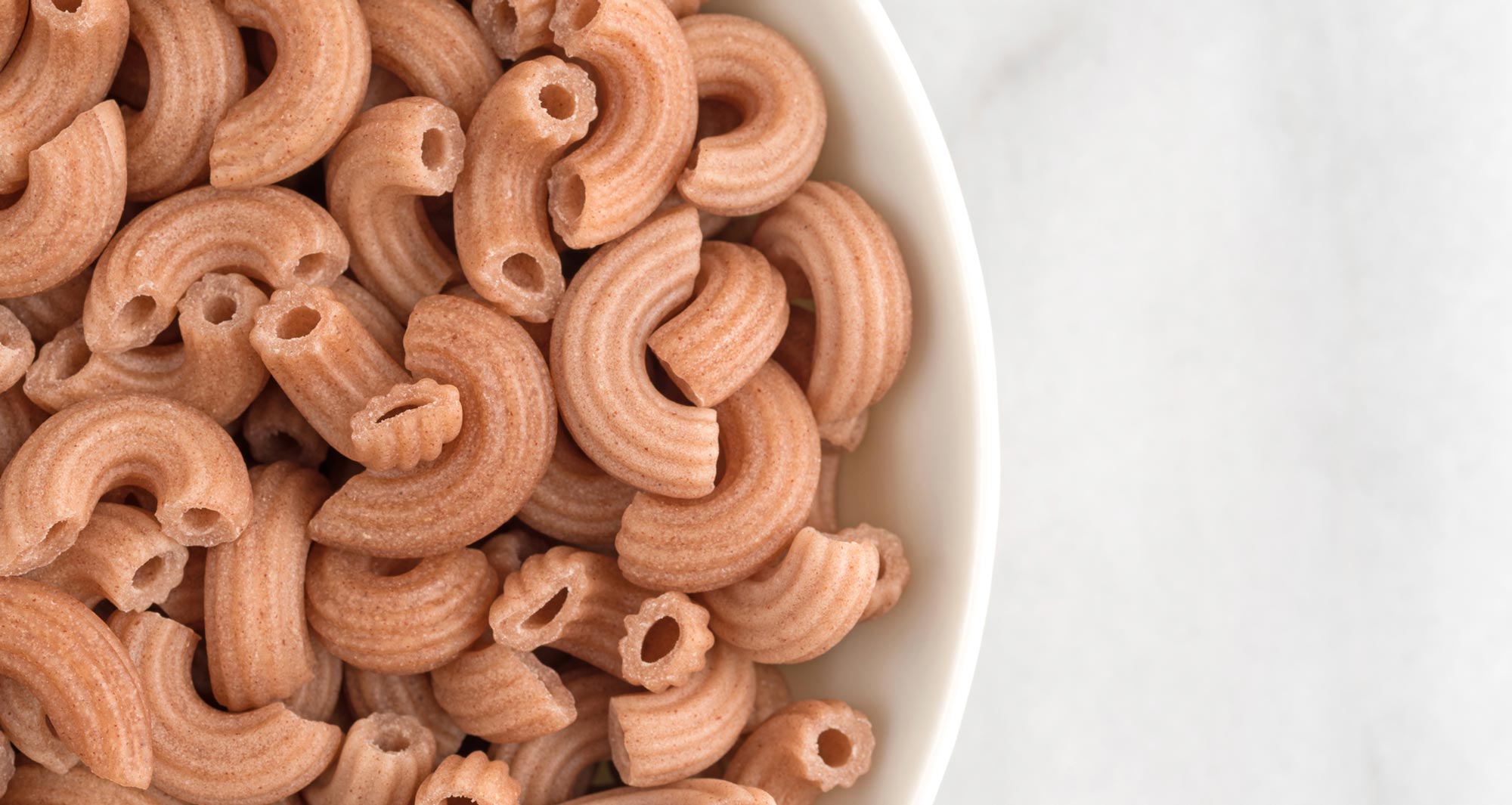
High levels of arsenic have been found in many rice products, too.
For example:
- Rice milk
- Brown rice syrup
- Rice-based pasta
- Bread made with rice
- Cereals made with rice
- Crackers made with rice
- Cereal bars with rice or brown rice syrup
So it’s important to consider reducing the amount of all rice products you’re eating.
According to tests by Consumer Reports, only one serving of rice cereal or rice pasta could put kids over the maximum amount of rice they recommend in a week.
And rice cakes give kids close to a weekly limit in only one serving!
Why Gluten-Free Eaters Should Be Concerned
If you eat a gluten-free or gluten-reduced diet, you probably know that many products marketed as “gluten-free” contain rice.
People who eat a gluten-free diet or gluten-free products may be more likely to have higher arsenic exposure.
In fact, according to a 2017 study published in the journal Epidemiology people who reported eating a gluten-free diet had, on average, almost two times the amount of arsenic in their bodies compared to people who weren’t gluten-free.
When you buy packaged foods, you may want to check the ingredients for rice and eat less of these foods.
And remember, many healthy foods are naturally free of gluten, such as fresh, whole fruits and vegetables and other gluten-free grains.
Do Other Grains Contain Arsenic?
Consumer Reports also looked into whether grains other than rice have concerning levels of arsenic.
Amaranth, buckwheat, millet, and polenta (grits) had negligible levels of inorganic arsenic. Bulgur, barley, and farro also had very little arsenic.
Quinoa had much lower levels than any of the rice they tested, but the amount varied depending on the sample.
Alternatives to Rice You Should Try
There’s a whole world of grains and other foods worth trying. Why consume mostly rice when you have so many exciting and delicious options?
Here are seven healthy rice alternatives worth trying:
Oats: A Hearty and Affordable Breakfast
Oats and oatmeal are packed with protein and are great for digestion. Eating them can also help you feel full.
Oatmeal makes a popular breakfast option, but try having a bowl anytime when you’re hungry. Or add some oats to your smoothie or smoothie bowl to make it more satisfying.
For a new oat-filled breakfast idea, try these Cinnamon Pear Baked Oatmeal Cups.
Quinoa: A Nutty and Wholesome Seed with A Slight Crunch
Quinoa, a pseudo-grain, has even more fiber and protein than rice. You can serve it like you would rice — plain, seasoned, in casseroles, or with a stir-fry.
And quinoa cooks in about half the time as brown rice (and about the same time as white rice). But remember this: When you cook quinoa, try rinsing it first. Rinsing will remove a bit of bitter taste, yielding a sweeter and tastier grain.
You might enjoy this Asian Quinoa Salad for a weekday lunch or dinner.
Barley: One of The Oldest Consumed Grains in The World
If you’ve had barley, you’ve probably had it in a soup. But this high-fiber grain can do more.
It can work like rice in a number of dishes. Eat it plain as a side or turn it into a pilaf. (Barley does contain gluten, so if you’re gluten-free, you’ll want to avoid it.)
Give this Creamy Barley Risotto with Thyme and Star Anise a try instead of reaching for rice.
Millet: A Nutritional Powerhouse

Hailing from China, this tiny seed is prized in Africa and South America for its nutrient profile and its culinary flexibility.
The definition of fluffy, millet lends itself well to porridges, sides, and even as a gluten-free base for bread and baked goods.
It also grows in areas with poor soil, making it an excellent tool in the fight against world hunger.
Warm your belly with a bowl of this hearty, White Bean and Millet Chili.
Teff: Said to Be The Tiniest Grain on Earth
A staple in Ethiopian cuisine, teff is a tiny brown grain that packs a hearty nutritious punch.
It cooks more like a porridge than a fluffy side of rice. But its nutty flavor and versatility make it a welcome reprieve from dinner routines.
Try your hand at making traditional Ethiopian injera (fermented teff flatbread) with our Homemade Injera recipe.
Amaranth: You May Not Know It, But Can Find It In Most Grocery Stores
Amaranth, also a pseudo-grain, looks similar to teff and has a slightly sweet and nutty flavor. Plus, it’s higher in minerals than many vegetables.
From savory to sweet, you can use this seed in a variety of dishes or as a thickener for sauces, soups, and stews.
You’ve heard of puffed rice, now give puffed amaranth a try as a topping in this Pumpkin Spice and Amaranth Smoothie Bowl.
Buckwheat: A Grain Not Related to Wheat

Despite its name, buckwheat is gluten-free because it’s a pseudo-grain. It’s similar to quinoa, yet it’s larger and softer.
Buckwheat is loaded with protein — more than any other grain except quinoa. It’s also an excellent source of vitamin B6, magnesium, and potassium.
Looking for a healthy breakfast idea? Try these Fluffy Buckwheat Chia Pancakes.
Cauliflower Rice: Easy to Make and Light and Fluffy
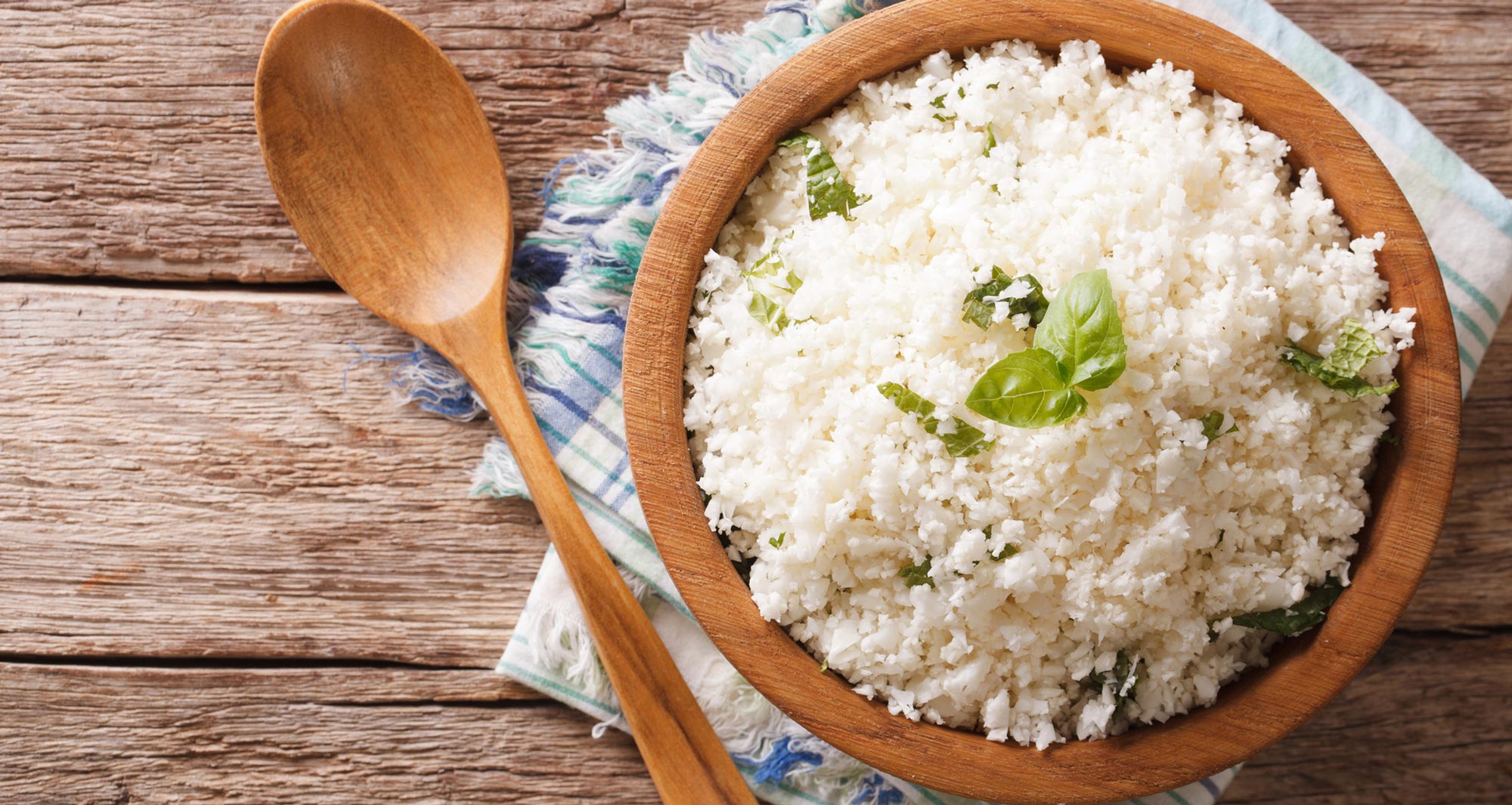
Minced or “riced” cauliflower looks like rice, but it’s totally veggie-powered.
Eating cauliflower rice can be a healthy way to enjoy the outstanding nutrient density of cauliflower while also avoiding arsenic and having your “rice,” too.
But how do you make it? Try this Cauliflower Fried Rice recipe.
Healthy Eating Can Protect You From Arsenic in Rice (And Other Contaminants, Too!)
Eating healthy foods and keeping your gut happy and healthy will help your body eliminate toxins and protect you from harm.
Specifically, cruciferous veggies like broccoli, cabbage, kale, and arugula can help you detoxify. They contain a compound called sulforaphane, which studies have shown can assist with protection from and elimination of arsenic, other heavy metals, and pesticides.
And a 2014 study published in Asian Pacific Journal of Tropical Biomedicine found that moringa (often consumed as a powder) may also be useful in reducing the risks of arsenic.
Should You Give Up Rice for Good?

Professor Andy Meharg of Queen’s University Belfast (who has been studying arsenic for decades) equated arsenic to smoking. He told the BBC:
“It’s dose-dependent — the more you eat, the higher your risk is.”
Overall, your best bet is to reduce your rice consumption to about one time per week, rotate in other grains, and aim for a healthy, balanced diet to help your body defend itself from harm.
Most likely, you don’t need to cut out rice completely in order to reduce your arsenic exposure significantly.
Tell us in the comments:
-
Do you have any questions about arsenic in rice?
-
How do you eat these or other alternatives to rice?
Featured Image: iStock.com/izzzy71
